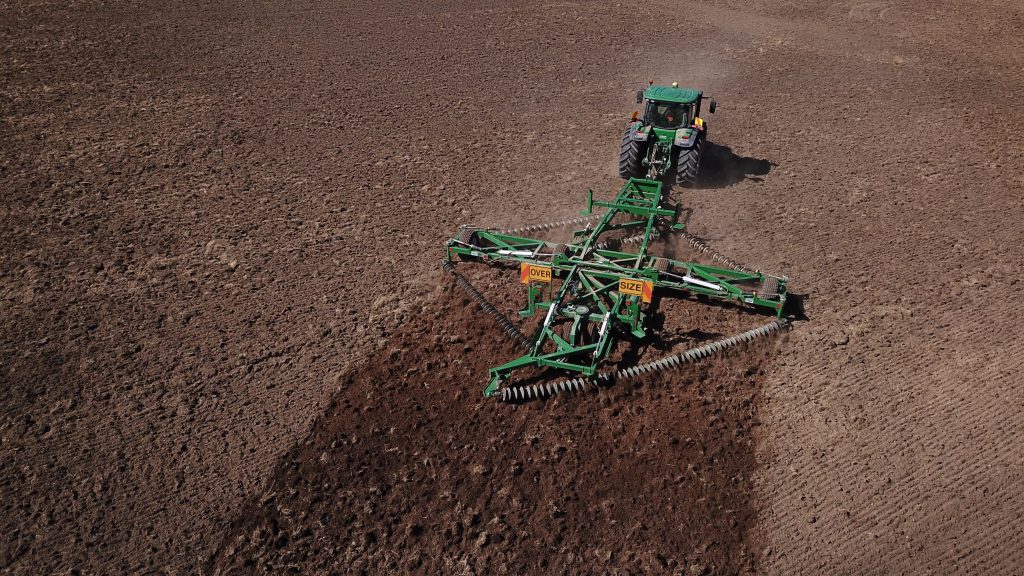Hi Farmers! Here in this blog, we aim to provide you with knowledge regarding the importance of tillage. We are dedicated to assisting both beginners and expert farmers with detailed and valuable information.
We hope that this will be a valuable resource for all of you!
Tillage Definition, Types, and Importance
Tillage refers to a farming practice of preparing the soil for planting crops. It involves mechanical operations that aim to loosen, turn, or mix the soil to create a suitable seedbed for planting.
Tillage can help control weeds, improve soil structure, incorporate organic matter, and enhance water infiltration.
No Tilling, No Farming! Get the Best Diamond Harrows with Kelly.
Let’s talk about the how worthy tillage is :
Increased Water Absorption
Tillage has an immediate impact on water absorption in the soil by breaking up compacted layers and creating pore spaces, enhancing water infiltration. This benefit is especially valuable in regions with insufficient drainage as it facilitates the penetration of water into the soil.
It can incorporate organic matter into the soil, improving its moisture retention capacity. Organic matter acts like a sponge, effectively retaining water in the soil and minimizing runoff.
Better Soil Aeration
Tillage plays a key role in improving soil aeration by breaking up compacted soil, resulting in a looser soil structure and the creation of more pore spaces. This enhanced soil aeration is vital for facilitating gaseous exchange within the soil environment.
Oxygen, which is necessary for the respiration of soil organisms such as beneficial bacteria and fungi, is readily available in well-aerated soils. These organisms play a vital role in nutrient cycling and the decomposition of organic matter.
Moreover, sufficient oxygen levels support the growth and development of plant roots. Tillage is important to the root area for enhancing the soil’s capacity to deliver oxygen to plant roots.
When soil structure is loosened a little, it generates channels and pores that facilitate easier root penetration This improved root growth expands the surface area available for nutrient and water absorption, resulting in healthier crops.
Till To Get Rid Of Pests
Tillage helps get rid of unwanted pests by disturbing their homes. When the soil is turned over during tilling, pests like insects are exposed and lose their sheltered places. This makes it harder for them to survive and reproduce.
They also become more vulnerable to predators and bad weather, which reduces their numbers. So, by disrupting pest habitats, tillage helps in removing pests from farms and fields.
Manure and Fertilizers: Achieving a Uniform Distribution
Tillage aids in preventing manure and fertilizers from staying on the soil surface, where they are vulnerable to runoff during rainfall. Runoff can result in uneven nutrient distribution, leading to nutrient loss and the potential contamination of nearby water bodies.
The mixing action during tillage ensures an even dispersion of nutrients throughout the tilled layer. As a result, when plants’ roots expand in this region, they can access nutrients in a uniform manner, facilitating balanced growth and development.
Maximize Seed-Soil Contact
When farmers till the soil, they break up the hard layers, which makes it easier for seeds to go into the soil. This helps the seeds touch and connect with the soil particles around them, which is important for their growth.
Different ways of tilling, like harrowing, can make the soil smooth and get rid of obstacles like rocks or weed roots that might stop seeds from touching the soil.
Shallow Depth, Deep Impact With Kelly 12X
Farmers discover the potential of the Kelly 12X, the Diamond Harrow that promises an unforgettable experience. This amazing machine is the best at smoothing and leveling the soil. With its impressive 12-foot width, it can cover a large area.
24 Months Warranty
The Kelly 12X ensures complete transparency with no undisclosed expenses. Featuring sealed bearings and a robust steel frame, This Diamond Harrow is built to withstand any challenge you put it through, promising long-lasting durability.
Controls Weed
Tillage proves to be a highly efficient technique in weed control as it possesses the capability to bury weed seeds deep within the soil. When the soil is tilled, it disrupts and later buries the weed seeds that reside on the soil surface, diminishing their likelihood of sprouting and appearing above ground.
This burial process places the seeds in an unfavorable environment that hinders their growth, depriving them of the essential light and moisture required for germination.
Introducing the K4 Disc:
Kelly Tillage Disc is effective for weed control, particularly in loamy soils. With its sharp edge, this mid-weight disc effortlessly uproots weeds, flipping them onto the surface where they die in no time.
Types Of Tillage
It is divided into two categories:
Conservation Tillage
- Mulch Tillage
- Reduced Tillage
- Zone Tillage
- Strip-Till
- In-Row Subsoiling
- Ridge Till
Conventional Tillage
- Primary Tillage
- Secondary Tillage
- Intensive Tillage
Learn more about the Types Of tillage Systems in detail.
Conclusion
Unite with Kelly Tillage to practice conservation tillage. Together we can do it!
Tillage holds immense importance in farming. It plays a crucial role in facilitating soil preparation, nutrient management, and weed control.
Moreover, it creates a favorable seedbed for optimal plant growth and establishment by loosening the soil and facilitating seed germination and root penetration.
It is integral to carefully consider the potential adverse effects of excessive or improper tillage practices, including soil erosion and organic matter loss.
Recognizing this, alternative approaches like conservation tillage have gathered attention for its ability to preserve soil structure and enhance long-term sustainability.


